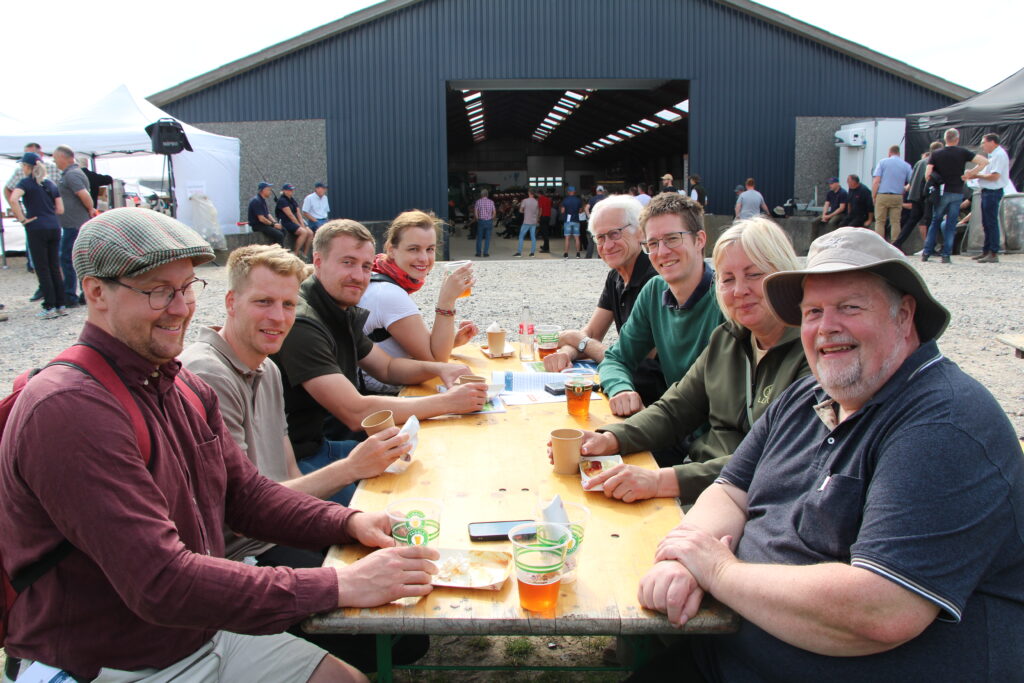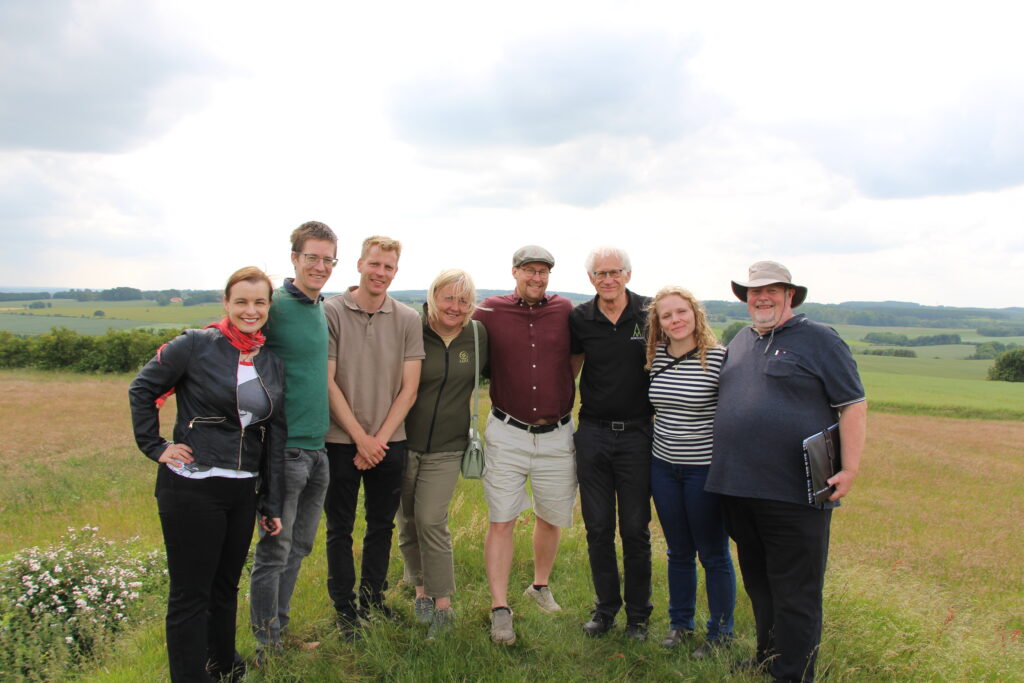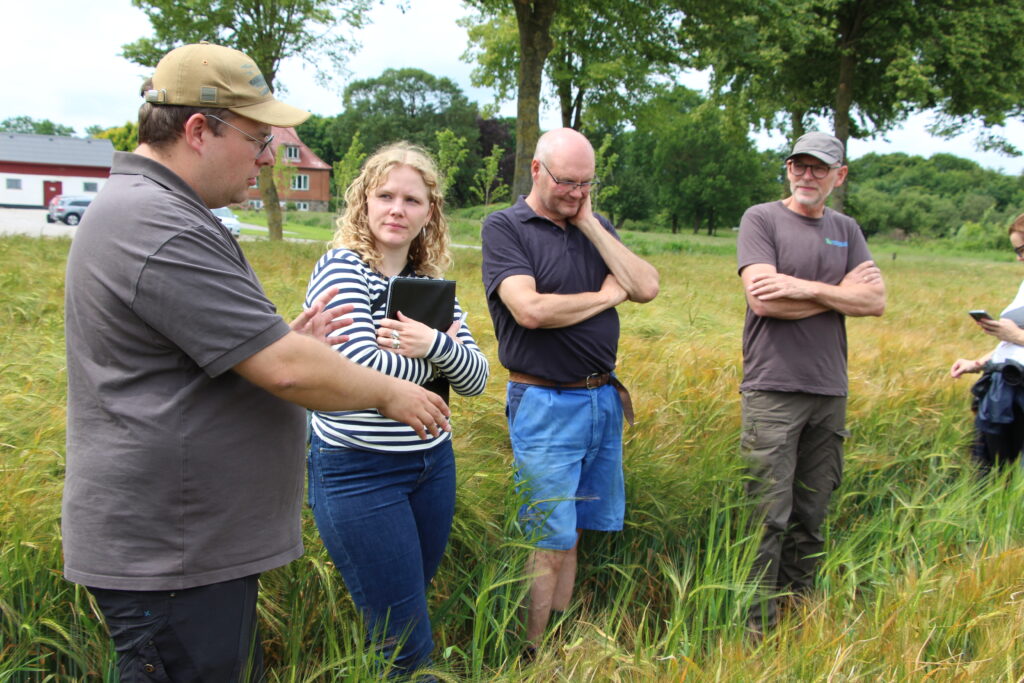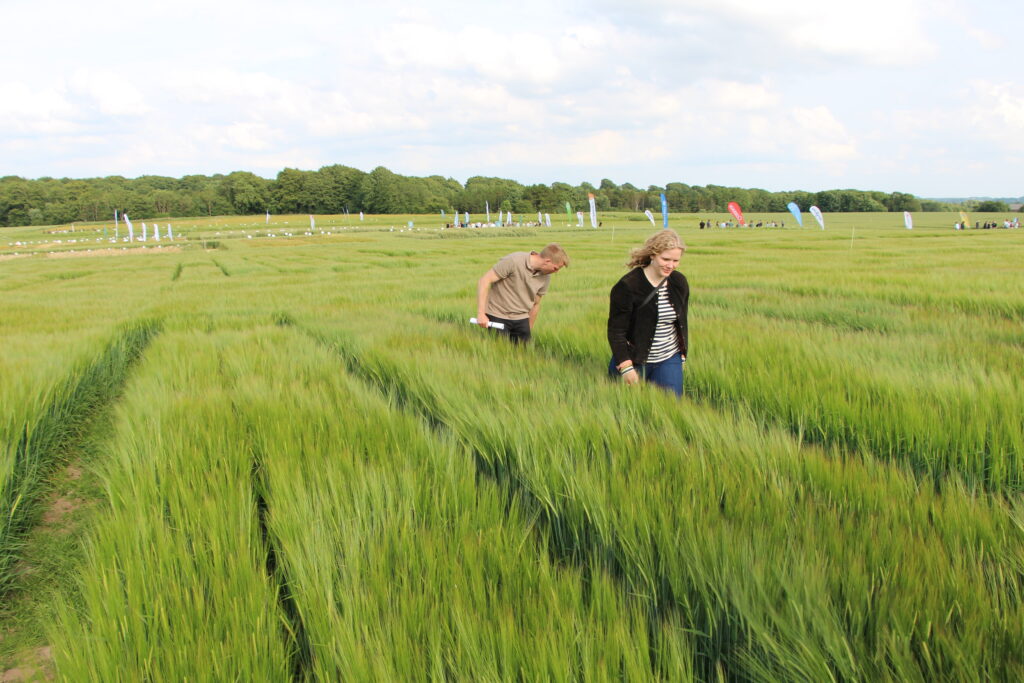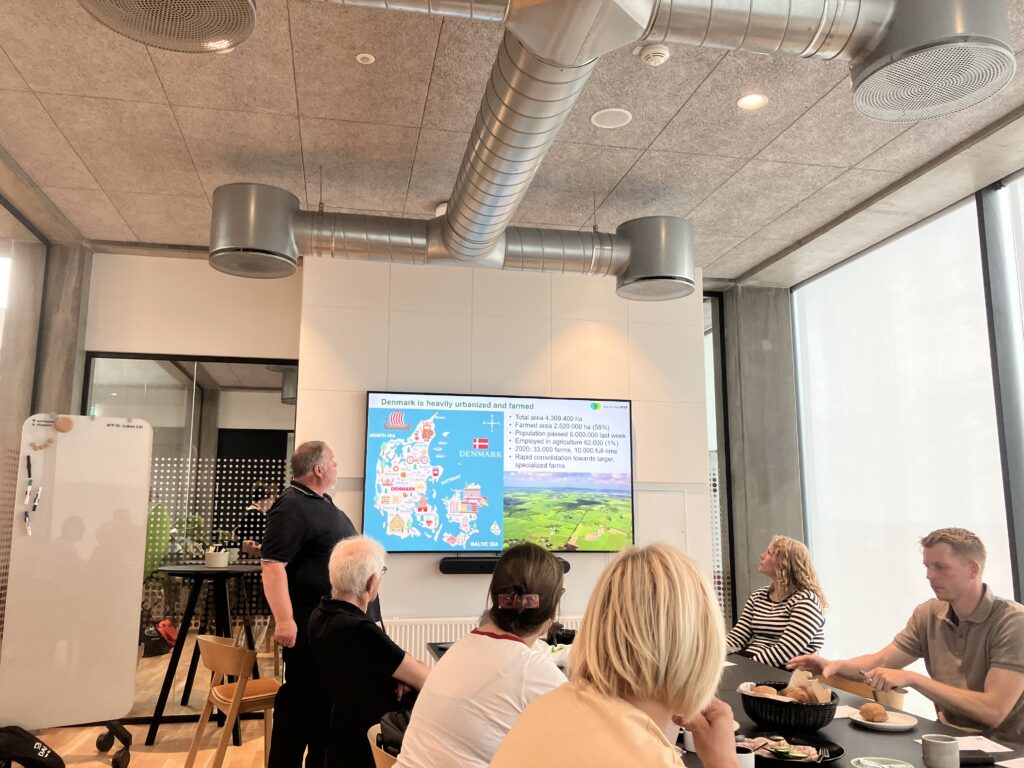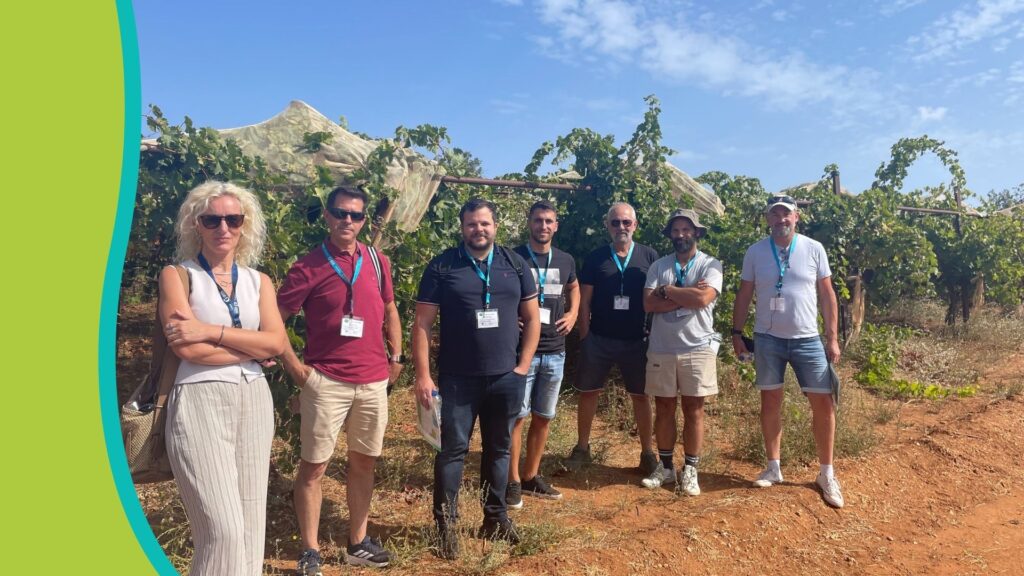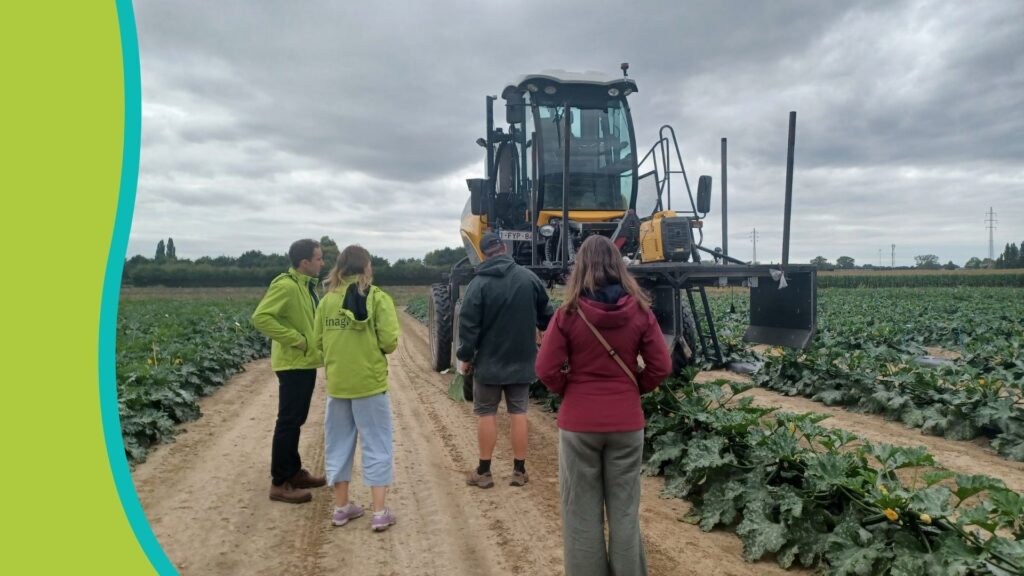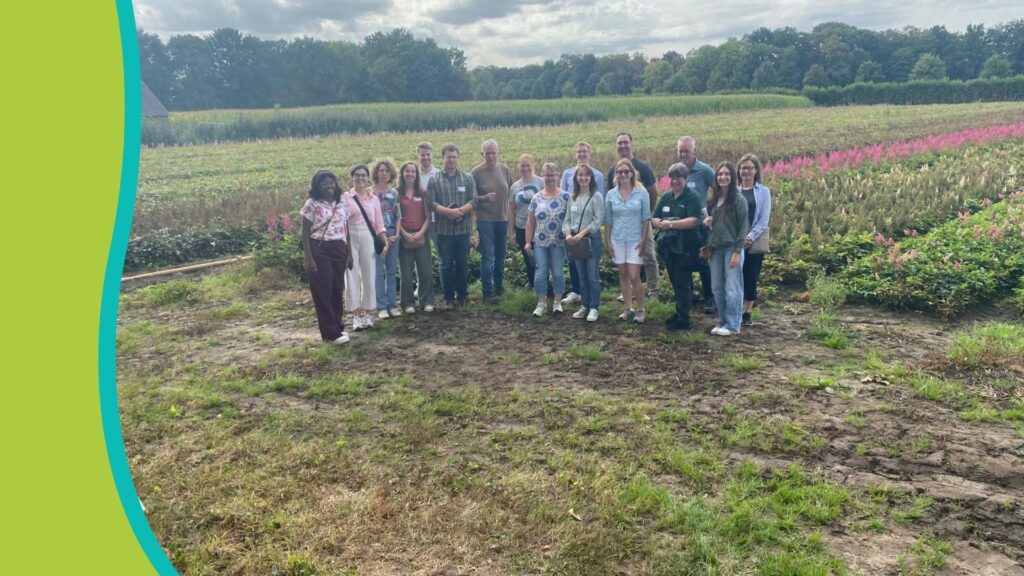In June 2025, nine participants from Austria, Latvia, Poland, and Sweden travelled to Denmark to take part in a cross-visit hosted by SEGES. The two-day event, held on 17–18 June, focused on an innovative national monitoring system designed to support advisors and farmers in tracking pest and disease pressure. The visit offered deep insights into how digital tools and advisor networks can enhance decision-making and reduce unnecessary pesticide use across Europe.
A Field Visit to Krannestrup I/S
Participants visited Krannestrup I/S, a family-owned farm dating back to the 1890s and managed today by Niels Aage Arve together with his son Kristian. With around ten employees managing both fieldwork and pig production, Krannestrup combines a strong respect for tradition with a forward-looking commitment to innovation. This environment provided the ideal backdrop to explore Denmark’s monitoring network.
The Novel Approach: A National Monitoring Network for Pests and Diseases
The focus of the cross-visit was Denmark’s “Registreringsnet”, a digital tool managed by SEGES Innovation. The system is continuously updated by advisors across the country, who assess fields weekly and register findings on pests and disease incidence. Farmers and advisors can then use this real-time information to anticipate risks and adapt plant protection strategies accordingly.
Although Niels Aage does not input data directly into the system, the monitoring network is an essential tool for his advisors, who interpret the national and local trends and support him in making informed decisions. The data allows him to postpone or reduce pesticide applications when no significant threats are present—a key step toward sustainability and cost-efficiency.
Implementation and Practical Considerations
Adopting the practice is relatively simple for farmers because SEGES Innovation and advisors carry out the monitoring work. Farmers must stay updated weekly throughout the growing season, comparing regional data with their own field observations. Collaboration with advisors is essential, enabling farmers to adjust plant protection measures based on reliable nationwide information.
Benefits Observed at Farm Level
The monitoring system provides a decisive advantage: it keeps the farmer one step ahead of pests and diseases. Early detection supports healthier crops, stabilises yields, and promotes sustainable spraying strategies. By knowing when disease pressure is low, Niels Aage can reduce pesticide doses, applying only what is necessary to maintain crop health. This increases efficiency while reducing environmental impact.
Perspective from the Host Farmer
According to Niels Aage, adopting the monitoring network has improved the farm’s ability to stay “on top of things” throughout the growing season. He highlighted the sense of security that comes from having a clear, data-driven overview of potential threats.
Resources, Skills, and Infrastructure Needs
For broader implementation of a similar system in other EU countries, certain foundations must be in place. These include a robust technical infrastructure for data collection and analysis, as well as training for farmers and advisors to ensure correct pest and disease assessments. Collaboration with advisory centres and agricultural organisations is crucial for adapting the system to local conditions. Pilot projects would be an effective first step before scaling to national level.
Training Requirements
Both farmers and advisors need solid training in using the system and interpreting its data. Advisors responsible for weekly field assessments require strong expertise in identifying and evaluating pests and diseases to guarantee reliable data for the national network.
Advice from the Advisor
Advisors emphasised that the registration network is particularly valuable during the growing season. It helps both farmers and advisors remain proactive, enabling well-timed, targeted strategies that minimise pesticide use while safeguarding crop health.
Highlights of the Cross-Visit
The visit sparked rich discussions about differences in regulations, cultivation practices, and monitoring systems across countries. Participants appreciated the open dialogue and the exchange of ideas, which offered new perspectives on how similar networks could function in their own contexts.
Participants’ Feedback
Feedback from participants was overwhelmingly positive. They valued the balance between technical discussions, field observations, and cultural experiences. Despite the tight schedule, the visit ran smoothly and encouraged meaningful conversation at every stage. The combination of professional insight and collaborative spirit made the event a rewarding experience for all involved.
